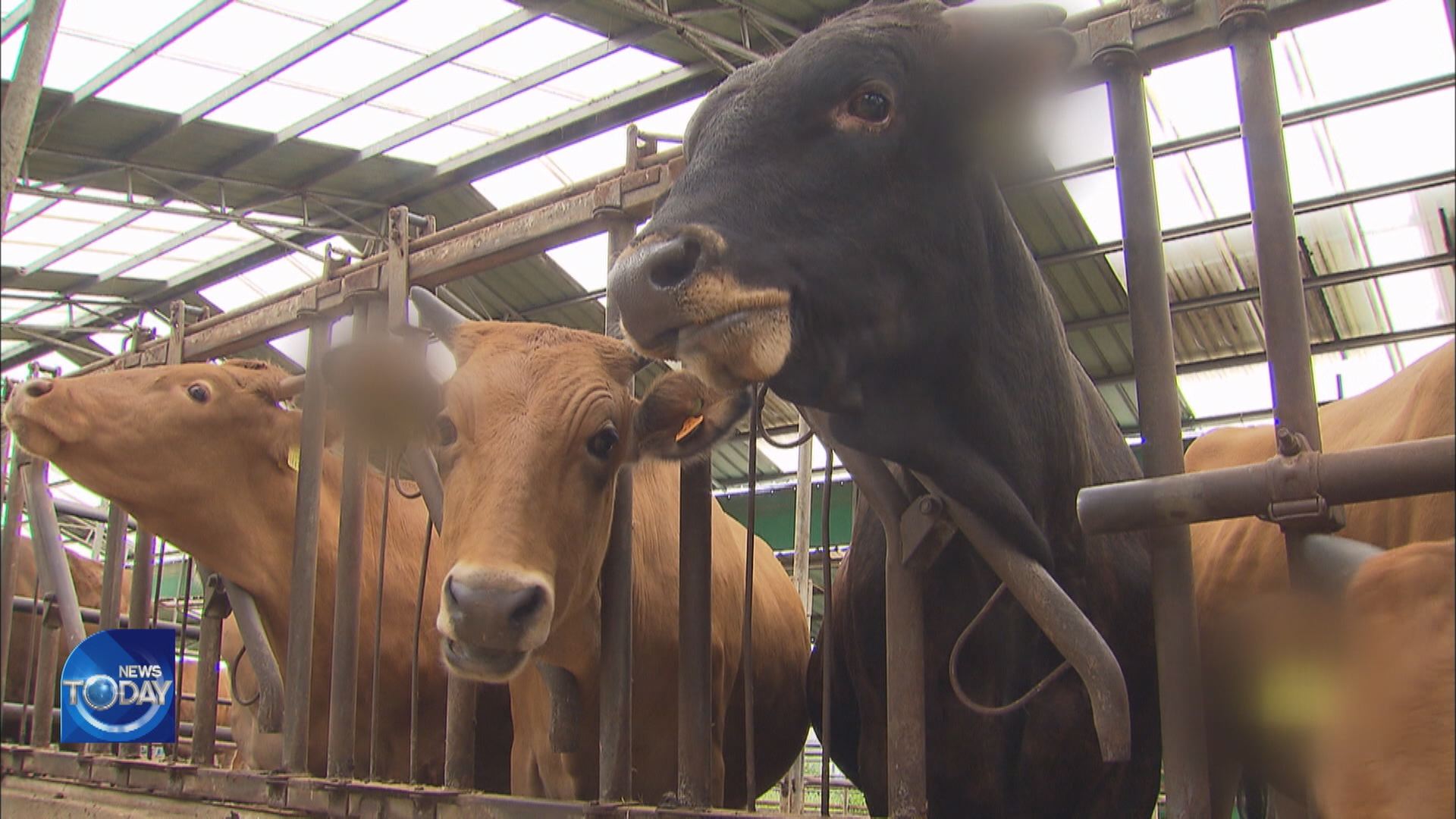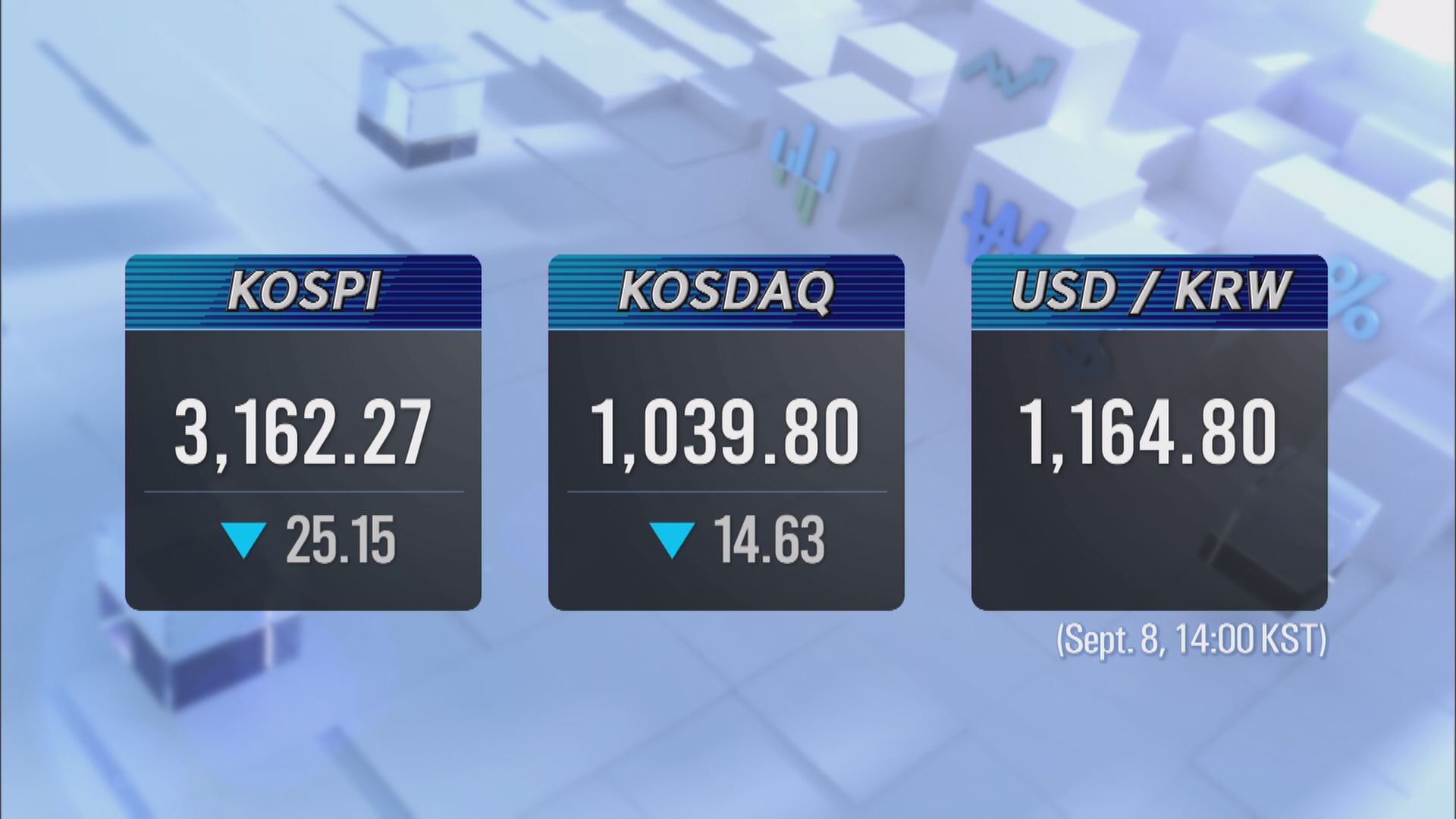EFFORTS TO PRESERVE STRIPED COWS
입력 2021.09.08 (15:04)
수정 2021.09.08 (16:46)
읽어주기 기능은 크롬기반의
브라우저에서만 사용하실 수 있습니다.
[Anchor Lead]
Efforts are under way to preserve the indigenous striped cow which was on the brink of going extinct during the Japanese colonial era. The goal of increasing their population was attained but in recent years, the numbers have been sliding again.
[Pkg]
Cows with clear black stripe marks are resting about in a shed. Some are covered entirely in black. They are an indigenous Korean cattle breed of Hanwoo known as the striped ox. As the more familiar brown ochre colored cattle were named the Hanwoo standard during the colonial period, the striped cows nearly went extinct with just a hundred or so remaining. Preservation efforts began in the late 1990s by a local organization. And then from 2007, the National Institute of Animal Science provided more systematic state-level oversight. Artificial propagation was successfully conducted and the striped cow population increased at one point as their scarcity drew attention. But the numbers have been falling again in recent years. The nationwide count dropped nearly 15% from 37-hundred in 2017 to 31-hundred last year. In Chungcheongbukdo Province, the number is down close to 30%. Farmers are reluctant to breed them as the striped cattle weigh about 100 kilograms less than their brown counterparts and getting top grade recognition is also more difficult.
[Soundbite] Jeon Sun-hong(Chungcheongbuk-do Animal Hygiene Test Lab) : "Over 80% of regular Hanwoo cows earn the first-grade label but it’s below 50% for the striped ones. So breeding them makes less economic sense."
In many regions, branding of these striped cattle falls short. They are not being actively promoted, leading to challenges in distribution.
[Soundbite] Prof. Choi Seong-ho(Chungbuk Nat’l University) : "If there’s a system that works as conveniently as the one for regular Hanwoo, I believe there’s no reason not to breed them."
Experts call for relevant measures such as improving the breed to be more fit for commercialization and creating an exclusive distribution system to assist farms with income loss.
Efforts are under way to preserve the indigenous striped cow which was on the brink of going extinct during the Japanese colonial era. The goal of increasing their population was attained but in recent years, the numbers have been sliding again.
[Pkg]
Cows with clear black stripe marks are resting about in a shed. Some are covered entirely in black. They are an indigenous Korean cattle breed of Hanwoo known as the striped ox. As the more familiar brown ochre colored cattle were named the Hanwoo standard during the colonial period, the striped cows nearly went extinct with just a hundred or so remaining. Preservation efforts began in the late 1990s by a local organization. And then from 2007, the National Institute of Animal Science provided more systematic state-level oversight. Artificial propagation was successfully conducted and the striped cow population increased at one point as their scarcity drew attention. But the numbers have been falling again in recent years. The nationwide count dropped nearly 15% from 37-hundred in 2017 to 31-hundred last year. In Chungcheongbukdo Province, the number is down close to 30%. Farmers are reluctant to breed them as the striped cattle weigh about 100 kilograms less than their brown counterparts and getting top grade recognition is also more difficult.
[Soundbite] Jeon Sun-hong(Chungcheongbuk-do Animal Hygiene Test Lab) : "Over 80% of regular Hanwoo cows earn the first-grade label but it’s below 50% for the striped ones. So breeding them makes less economic sense."
In many regions, branding of these striped cattle falls short. They are not being actively promoted, leading to challenges in distribution.
[Soundbite] Prof. Choi Seong-ho(Chungbuk Nat’l University) : "If there’s a system that works as conveniently as the one for regular Hanwoo, I believe there’s no reason not to breed them."
Experts call for relevant measures such as improving the breed to be more fit for commercialization and creating an exclusive distribution system to assist farms with income loss.
■ 제보하기
▷ 카카오톡 : 'KBS제보' 검색, 채널 추가
▷ 전화 : 02-781-1234, 4444
▷ 이메일 : kbs1234@kbs.co.kr
▷ 유튜브, 네이버, 카카오에서도 KBS뉴스를 구독해주세요!
- EFFORTS TO PRESERVE STRIPED COWS
-
- 입력 2021-09-08 15:04:00
- 수정2021-09-08 16:46:22

[Anchor Lead]
Efforts are under way to preserve the indigenous striped cow which was on the brink of going extinct during the Japanese colonial era. The goal of increasing their population was attained but in recent years, the numbers have been sliding again.
[Pkg]
Cows with clear black stripe marks are resting about in a shed. Some are covered entirely in black. They are an indigenous Korean cattle breed of Hanwoo known as the striped ox. As the more familiar brown ochre colored cattle were named the Hanwoo standard during the colonial period, the striped cows nearly went extinct with just a hundred or so remaining. Preservation efforts began in the late 1990s by a local organization. And then from 2007, the National Institute of Animal Science provided more systematic state-level oversight. Artificial propagation was successfully conducted and the striped cow population increased at one point as their scarcity drew attention. But the numbers have been falling again in recent years. The nationwide count dropped nearly 15% from 37-hundred in 2017 to 31-hundred last year. In Chungcheongbukdo Province, the number is down close to 30%. Farmers are reluctant to breed them as the striped cattle weigh about 100 kilograms less than their brown counterparts and getting top grade recognition is also more difficult.
[Soundbite] Jeon Sun-hong(Chungcheongbuk-do Animal Hygiene Test Lab) : "Over 80% of regular Hanwoo cows earn the first-grade label but it’s below 50% for the striped ones. So breeding them makes less economic sense."
In many regions, branding of these striped cattle falls short. They are not being actively promoted, leading to challenges in distribution.
[Soundbite] Prof. Choi Seong-ho(Chungbuk Nat’l University) : "If there’s a system that works as conveniently as the one for regular Hanwoo, I believe there’s no reason not to breed them."
Experts call for relevant measures such as improving the breed to be more fit for commercialization and creating an exclusive distribution system to assist farms with income loss.
Efforts are under way to preserve the indigenous striped cow which was on the brink of going extinct during the Japanese colonial era. The goal of increasing their population was attained but in recent years, the numbers have been sliding again.
[Pkg]
Cows with clear black stripe marks are resting about in a shed. Some are covered entirely in black. They are an indigenous Korean cattle breed of Hanwoo known as the striped ox. As the more familiar brown ochre colored cattle were named the Hanwoo standard during the colonial period, the striped cows nearly went extinct with just a hundred or so remaining. Preservation efforts began in the late 1990s by a local organization. And then from 2007, the National Institute of Animal Science provided more systematic state-level oversight. Artificial propagation was successfully conducted and the striped cow population increased at one point as their scarcity drew attention. But the numbers have been falling again in recent years. The nationwide count dropped nearly 15% from 37-hundred in 2017 to 31-hundred last year. In Chungcheongbukdo Province, the number is down close to 30%. Farmers are reluctant to breed them as the striped cattle weigh about 100 kilograms less than their brown counterparts and getting top grade recognition is also more difficult.
[Soundbite] Jeon Sun-hong(Chungcheongbuk-do Animal Hygiene Test Lab) : "Over 80% of regular Hanwoo cows earn the first-grade label but it’s below 50% for the striped ones. So breeding them makes less economic sense."
In many regions, branding of these striped cattle falls short. They are not being actively promoted, leading to challenges in distribution.
[Soundbite] Prof. Choi Seong-ho(Chungbuk Nat’l University) : "If there’s a system that works as conveniently as the one for regular Hanwoo, I believe there’s no reason not to breed them."
Experts call for relevant measures such as improving the breed to be more fit for commercialization and creating an exclusive distribution system to assist farms with income loss.
이 기사가 좋으셨다면
-
좋아요
0
-
응원해요
0
-
후속 원해요
0

















이 기사에 대한 의견을 남겨주세요.